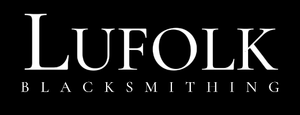Vikings and fearsome weapons? Sure, we all think of axes and swords. But a more versatile companion was their ever-present knife. These weren't just for fighting; they were essential tools for everyday life, reflecting both practicality and cultural significance.
Viking Knife Styles
- Material Matters:
- Steel: The most common choice, offering a good balance of availability and sharpness.
- Higher Quality Steel: For the wealthy or fancy knives, this provided a sharper and more durable edge.
- Handles: Wood (common), bone (strong and stylish), antler (similar to bone), horn/whalebone (for fancy knives).
- Designed for the Job:
- Size Matters: Knives ranged from small and nimble for everyday tasks to large and robust for combat or hunting.
- Shape Speaks Volumes: The blade's shape, size, and thickness were carefully chosen for its purpose.
- Utility Knives: Small, handy blades for cutting, carving, and even meal prep.
- The Seax: A larger knife for various uses, from fighting to heavy-duty chores. Sizes varied from small belt knives to sword-like weapons. Some were plain, others were decorated.
- A Touch of Symbolism:
- Beyond Practical: Some knives had intricate designs, metal inlays, and carvings, hinting at a deeper meaning beyond just a tool.
Viking Knives in Action
- Essential Everyday Tools: Food prep, leatherworking, woodworking, shelter building, and personal care.
- Close Combat Companions: The seax could be a weapon for close-quarters fighting.
Decoration and Personalization
- Handle Flair: Carvings, and metal inlays for the wealthy.
- Sheath Chic: Leather adorned with metal fittings, and embroidery.
More Than Just Blades
Viking knives were indispensable tools, and status symbols, and carried by both men and women. Some evidence suggests they may have held spiritual significance as well.
The Legacy of Viking Knives
These knives were more than just blades; they were testaments of Viking ingenuity. From small blades to the formidable seax, they were meticulously crafted for their purpose. Studying them allows us to appreciate the remarkable craftsmanship and rich culture of the Viking Age.
Conclusion
Viking knives transcended mere blades, serving as vital tools, cultural signifiers, and possibly even spiritual objects. Their designs showcased Viking ingenuity, with each element carefully considered for its function. Studying these knives offers a window into the remarkable craftsmanship and rich cultural tapestry of the Viking Age.
